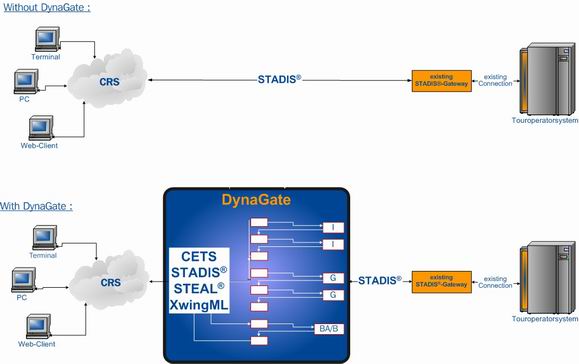|
DynaGate
Many tour operators, service provider and also travel agency chains work with particularly programmed reservation systems, which are attached to CRS via STADIS® communication. To use dynamic partial masks the CRS makes it possible for the user in the future to do a reservation without previous knowledge , because the input of shortterm expressions in the TOMA® mask is no longer necessary. DynaGate serves the translation of the new technology into the usual STADIS® format. Thus adjustments at existing gateways can be avoided.
Dynamic partial masks
Depending upon the requirements with DynaGate the tour operator has the possibility automatically to direct the user to a dynamic partial mask flow diagram in which gradually the information for the desired booking can be entered. DynaGate uses vacancy requests to the existing STADIS® gateway for the setting up of selection lists, in which the user can mark the desired service directly. After end of the defined operational sequence the booking informations are brought again into the TOMA® mask, before the desired action can be released by the user. .
|

